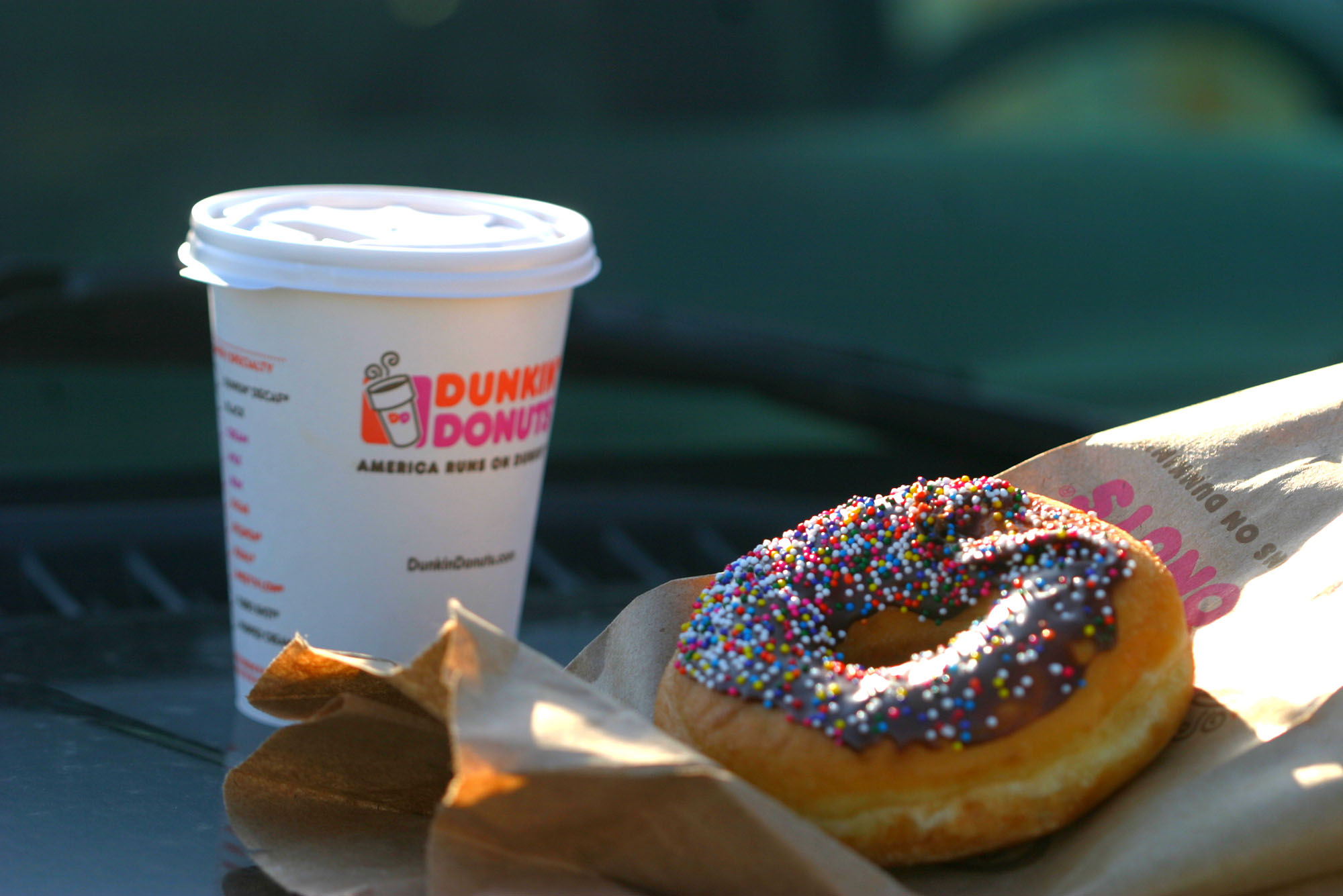Why Dunkin’s Revamped Rewards Program Has Angered So Many Customers
SHA faculty on the pitfalls for companies that make changes to their loyalty programs

Dunkin’ recently announced changes to its rewards program, which has some longtime users grumbling. Among the changes: customers must now spend $50—up from $40—to earn a free coffee. Photo by New_Folder/iStock
Why Dunkin’s Revamped Rewards Program Has Angered So Many Customers
SHA faculty on the pitfalls for companies that make changes to their loyalty programs
Need a coffee? If you’re a New Englander, there’s a good chance you frequent one of the more than 4,200 Dunkin’s spread across the region. (There are more than 11,0000 worldwide). Those in the know have learned to skip the line by ordering ahead on the Dunkin’ mobile app so their coffee and donut are ready when they get there.
Early adopters of the Dunkin’ mobile app, this writer among them, may recall the company’s once-generous and easy-to-use loyalty program, which handed out free coffees seemingly all the time: birthdays, National Donut Day, after a Pats win (with 2.25 million free drinks distributed before they started charging 87 cents, in an nod to Gronk), etc., etc. If you are one of those maniacs who requires a daily iced coffee even in a blizzard, the freebies added up.
But that all came crashing down recently when Dunkin’ (RIP Dunkin’ Donuts, the chain’s now defunct name) announced “upgrades” to its rewards app program. Many soon discovered the perks weren’t as generous as they’d been led to believe.
Let’s start with the positives of the new Dunkin’ Rewards program, like the fact that you can now apply the points you earn toward food, such as donuts and breakfast sandwiches, which wasn’t the case before. And those who visit Dunkin’ at least 12 times a month will unlock “Boosted Status,” giving them more points for each dollar spent. But readers of the fine print may instead harp on the negatives: for starters, the amount of money you need to spend to earn a free coffee has jumped from $40 to $50. While a “free beverage” reward used to mean any drink of any size, now Dunkin’ requires you to redeem more points if you want a latte, cold brew, or frappuccino. And gone are the free birthday drinks; instead, customers get triple points.
Some describe the rewards program as confusing and obtuse—Dunkin’ response: their new rewards program addresses three things members said they wanted to see: “Flexibility, variety, and recognition,” according to Scott Murphy, Dunkin’ Brands president and head of the beverage-snack category. “We did just that—we solved the three biggest constraints to bring a new and improved customer experience to Dunkin’ fans.”
Ehhhh….
The pandemic led to more customers becoming comfortable with mobile ordering and using an app. Dunkin’ joins brands like Chipotle and Starbucks, which also recently updated their loyalty shopping systems, partially blaming inflation for the decreased rewards for customers.
These loyalty programs are great ways to “boost customers’ allegiance, so they spend more and more often,” says Leora Lanz (COM’87), a School of Hospitality Administration associate professor of the practice and assistant dean for academic affairs. “They increase revenues by encouraging repeat purchases, or adding value to the traditional services offered and strengthening the customer relationship.” And it’s important to note that loyalty programs don’t guarantee customers will stick with your brand, she says, since they are already contending with “labor issues, supply chain situations, and inflation.”
Jonathan Katz (COM’88), an SHA lecturer in hospitality administration, says his graduate students in the Master of Management in Hospitality program recently spoke about Dunks’ changing its loyalty program. He says the issue isn’t that Dunkin’ changed its loyalty program—rather it’s the way they did it. “Simply stating that this is what customers want doesn’t come across as credible—especially when they [the customers] perceive the change as disadvantageous,” he says. “This is evidenced by the backlash the company is experiencing and many of the comments it’s receiving online. It’s a great example of how operating with transparency is essential. Be honest, emphasize the reason behind the change, and demonstrate how customers will ultimately benefit. That’s how brands can maintain trust and foster true loyalty.” Otherwise, he says, you risk customers switching to your competitor.
Ericka Correia (COM’26) says she’s a fan of Dunkin’s new app and design, especially since it means she can now redeem points for food. “I’ve already had some free munchkins,” she says. “I know I spend more money because I have the app, since I figure mobile ordering means I can avoid waiting in line.”
While Emma Farber (CAS’24) uses GrubHub to order Dunkin’ on campus (since the on-campus franchises don’t use the app), she says, she’ll occasionally use the Dunkin’ app if she’s near another Boston location. “I got a free donut the other day, so I’m still getting some benefits,” she says. “But I like the Starbucks app better. It’s easier to understand and to track your next reward.”
Katz points to Netflix as an example of a company that recently changed things up—and had customers reacting positively. In January 2022, the streaming service raised monthly prices for its standard plan by $1.50, but did so with “advance notice and a strong rationale,” Katz says. The company explained that this new revenue would be reinvested in producing their content, as well as announcing the news of a less expensive subscription option with commercials. These changes helped Netflix “regain its position as the top streaming service,” he says. “Transparency and true customer centricity work.”
Comments & Discussion
Boston University moderates comments to facilitate an informed, substantive, civil conversation. Abusive, profane, self-promotional, misleading, incoherent or off-topic comments will be rejected. Moderators are staffed during regular business hours (EST) and can only accept comments written in English. Statistics or facts must include a citation or a link to the citation.